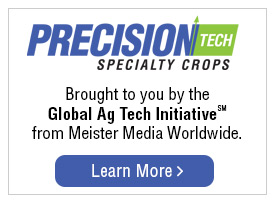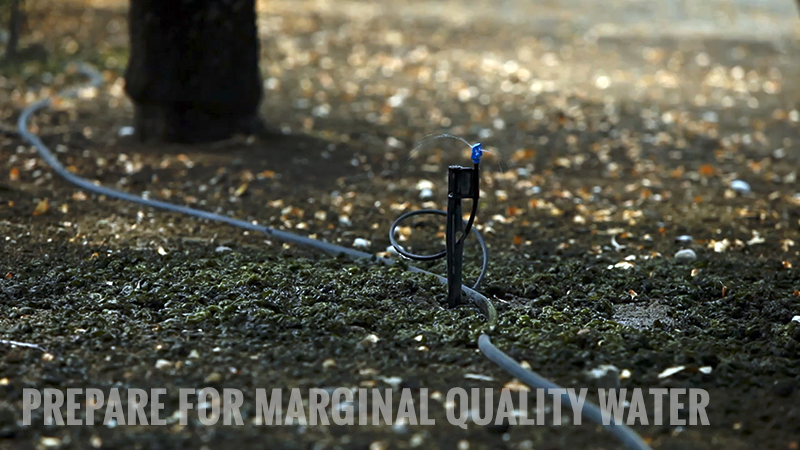How IoT in Agriculture Is Transforming the Way We Grow

With the implementation of IoT devices increasing globally, it is no surprise that they are being integrated into every facet of industry, leading the way for industry 4.0. New initiatives working to optimize industry, critical infrastructure, environmental monitoring, healthcare, and supply chain management are just some of the exploding use cases for IoT.
Another industry relying on the IoT is agriculture, which is being completely transformed by the implementation of complex IoT infrastructure. The agriculture market worldwide is leveraging IoT as part of new initiatives for crop monitoring, optimizing resources, livestock management, and automation. However, implementation is not a simple task. Even within agriculture, IoT contains numerous unique use cases, each with their own challenges, costs, and risks. If the agriculture sector can overcome these challenges, however, it could pave the way for farming to be transformed entirely with benefits that could expand far beyond agriculture, making positive impacts on the environment, the economy, and supply and demand.
How is IoT Being Used in Farming?
Use cases for IoT in agriculture are varied but essentially come down to optimizing and automating the process of managing crop yields, reducing waste, and monitoring external factors such as weather and environmental impacts on produce. Let’s look at four different use cases:
Precision Farming – Precision farming is a strategic approach to farming which uses IoT to enable devices to observe and measure crops, as well as livestock, then process the data to ascertain precise produce requirements and respond accordingly. According to a February announcement from Meticulous Research, the precision agriculture market is projected to reach $27.81 billion by 2031, at a CAGR of 12.9% from 2024 to 2031. This expected growth is due to increasing government initiatives that promote the use of modern technologies in the agriculture sector. Climate change is also impacting the growing demand for precision.
IoT sensors optimize agricultural management and production by measuring soil moisture levels, humidity and temperature changes, precipitation, and soil nutrients. Produce workers are able to apply this information to how they approach their farming practices, including crop fertilization, seasonal farming planning, and determining harvest times. This data also allows farms to respond to unforeseen problems such as disease outbreak in crops and mitigating the spread, as well as monitoring crop growth and managing irrigation. Applying this data to farming practices improves agricultural sustainability by working with changes in the environment and reducing resource waste.
Drone Use – IoT connected drones are another tool that the agricultural sector are using to monitor crops, livestock, weather and produce. Drones enable imaging as a method of field monitoring, the advantage of which, allow the ability to see in poor weather and light conditions, which satellite imaging may not be able to penetrate, increasing imaging accuracy. This accuracy allows farms to monitor pests, weeds, diseases and respond to their appearance accordingly. With an accurate overview, field conditions can be monitored more effectively and simplify management of planting and seeding.
Drones are also being utilized for pollinating, fertilizing, and spraying crops with pesticides. This automated process reduces the need for on-hand farming and saves time and resources.
Smart Greenhouses – Smart greenhouses are advanced agricultural structures that leverage IoT technologies to create optimized and controlled environments for plant growth. These high-tech greenhouses integrate sensors, actuators, and automation systems to monitor and regulate various environmental factors, ensuring optimal conditions for crops.
The concept of smart greenhouses can help simplify indoor farming. By integrating IoT technologies, these greenhouses become self-regulating environments that can control temperature, humidity, light levels, and even CO2 concentration to optimize plant growth. Their sensors and actuators work in tandem to create the perfect conditions for each plant species, adjusting in real-time to changes in external weather or internal growth patterns.
What Are the Challenges Implementing IoT in Agriculture?
eAgriculture or Smart Farming have been trialing and improving the utilization of digital and automated technologies and practices for a number of years, with the result potentially being one of significant gains in agriculture, environmental initiatives and the economy the world over. But high reward is most often preceded by high risk, and new IoT-based agricultural practices exhibit both. IoT enhanced agriculture is in its infancy and there are numerous challenges which could prevent these practices from becoming properly utilized and more widespread or maybe even prevent further investment before it has had the chance to properly take off. To address these challenges to mitigate risk to the evolving practice, it is first important to understand them:
Complex Adoption
The adoption of IoT in agriculture is fraught with challenges that stem from the very nature of farming environments and the technology itself. Connectivity issues are a concern, as many farms are situated in rural areas where internet access is limited or unreliable. This lack of connectivity hinders the effective deployment of IoT solutions, which rely on continuous data transmission to function optimally. Not only is their internet access limited, oftentimes so is their energy capacity. The energy requirements for agricultural IoT are substantial, especially when considering the scale — entire fields outfitted with sensors that must operate continuously. While renewable energy sources like solar and wind power present viable solutions, integrating these systems with IoT infrastructure requires planning and investment.
Maintenance must also be considered, as the durability and repairability of devices are a key consideration in the often harsh and unpredictable conditions of outdoor farming. Some advanced IoT technologies may necessitate the expertise of qualified engineers for repairs, further complicating the maintenance process. Their complexity can extend to the fact that IoT systems must be designed to be interoperable with existing agricultural systems, such as irrigation, and climate control setups. Ensuring compatibility and seamless integration with these established systems is essential to avoid disrupting the current operations and to maximize the benefits of IoT.
IoT Security Challenges
The integration of IoT in agriculture also brings with it a suite of security challenges and associated costs. IoT security challenges encompass a broad spectrum, such as data management and maintenance, which is critical for ensuring the reliability and accessibility of information collected from myriad devices. Privacy concerns also exist, as the personal and operational data inherent to farming practices must be safeguarded against unauthorized access. And across all this there must be compliance with regulatory standards, requiring adherence to the suite of laws designed to protect data integrity and privacy.
The susceptibility of cloud-based systems to cyber-attacks presents a significant risk, as these platforms are often the backbone of IoT operations; breaches here can lead to extensive downtime, disrupting an industry that may not be fully equipped to handle such cybersecurity incidents. Additionally, the management and renewal of certificates are essential for secure communications, yet they pose logistical challenges that must be addressed to prevent system failures.
Implementation and Management Costs
When it comes to implementation and management costs, the financial implications are considerable, particularly for small, locally-run farms that may lack the resources for such technological investments, often necessitating government or external funding. The hiring of specialized employees to manage and interpret IoT data adds to the labor costs, while the energy demands of running these devices can inflate operational expenses.
There’s also the costs stemming from a potential security breach — ranging from data loss to operational disruption — that can be substantial, underscoring the need for proactive security measures. The investment in security practices to protect the IoT ecosystem and devices is non-negotiable, despite its impact on the budget, as it ensures the long-term viability and safety of these innovative agricultural solutions.
The Imperative of Secure IoT in Agriculture
While facing significant challenges for IoT implementation in agriculture, the use of smart machinery in farming can lead us into a more sustainable future that could change the face of not only farming, but optimize supply chains, address food and produce shortages, and create a more sustainable, energy efficient future for farming.
This makes it essential that these evolving technologies are nurtured, receive proper support, investment, research, and most importantly are protected. The deployment of IoT in agriculture must be accompanied by robust security measures to protect against the vulnerabilities inherent in any connected system. Without stringent security practices, new eAgriculture initiatives risk falling short of their potential, suffering divestment, or even facing premature termination due to security breaches.
The Need for Stringent Security Practices
The interconnected nature of IoT devices makes them susceptible to cyber threats, which can have devastating effects on the integrity and reliability of farming operations. Therefore, it is imperative that:
- Security is a Priority: From the outset, security must be woven into the fabric of IoT solutions in agriculture, with regular updates and patches to address emerging threats.
- Investment in Research: Ongoing research into cybersecurity can ensure that the agricultural sector stays ahead of potential vulnerabilities.
- Support and Education: Farmers and stakeholders must be educated about the importance of security practices to foster a culture of vigilance and preparedness.
While IoT holds the key to a revolutionary future in agriculture, it is only through the lens of stringent security that we can fully realize its benefits. It is essential that these evolving technologies are not only nurtured and supported, but also shielded using the highest standards of cybersecurity. Only then can we ensure that the seeds of innovation in eAgriculture will blossom into the sustainable, efficient, and secure future we envision.








